
Peter Blasser: Designer of Electronic Tapestries and Garments. (Click on Image for High Res Shot)
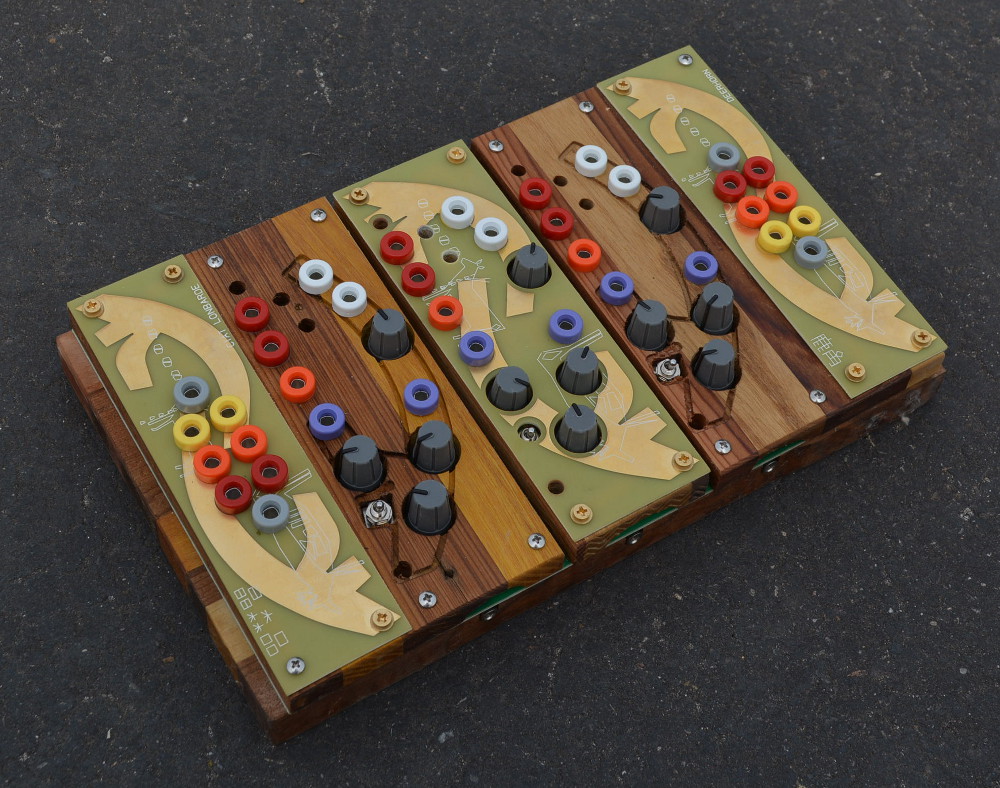
The design of the Deerhorn circuit has evolved much since it was first created to answer Clara Rockmore's original complaint with the Theremin: "Can there be more than one pitch?". Lev Theremin responded that one would need more than two arms, but the Deerhorn makes this possible by extracting gestural information from the radio fields and using it to control pitch and envelope. The current unit contains three of these antenna-synthesizer modules, and adds two extra, highly useful modules known as intersections.
An intersection module simply samples one deerhorn's antenna voltage at impulses provided by another module. It is a sample and hold, triggered by changes in gestural direction. Since there are three modules, there are six permutations, doubled because each module reports changes in both directions; there are twelve new outputs, plus four special ones that sample in random steps. Each deerhorn module emits a different light— red, orange, and yellow— which also color-codes the intersection bananas to show which module is being sampled.
The Deerhorn modules are color coded. An [orange banana] reports its primary product: a control voltage representing the hand's distance from antenna. The impulses utilized in intersections, are also available as [red bananas]. These are like two complimentary square waves that flip when the hand changes direction.
The base tone of deerhorn is a simple two tone straight bellow. That's as your hand moves in towards the antenna and back out again. You must always tune the response first, so that the two leds cross each other at a comfortable range from the antenna. Fine tuning is done with the top knob.
The bottom cluster of controls deal with the synthesizer frequencies. The bottom knob sets the base pitch of both oscillators. The next two knobs are associated with the [purple bananas]: they are FM tuning knobs. The switch on the stub of the deerhorn orients the stereo position of the oscillators. In middle position, it turns them off (for the stereo auxiliary inputs). The white bananas output the same stereo sound which is output the main output, but in single tracks so it can be used as separate modulation sources.
For coarse tuning of the antenna, two trimmer capacitors lie beneath every deerhorn module. They are well-tuned upon shipping, but may always be accessed via a face-port with small slotted screwdriver.

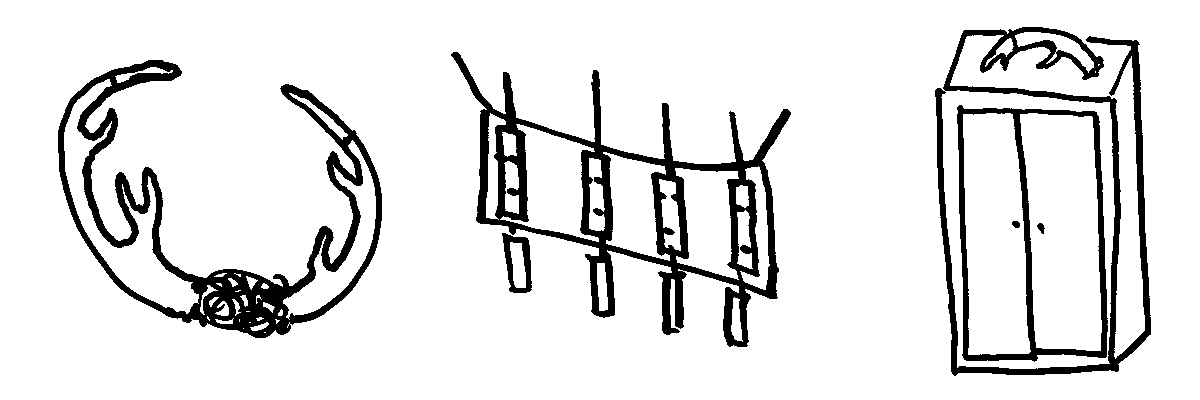
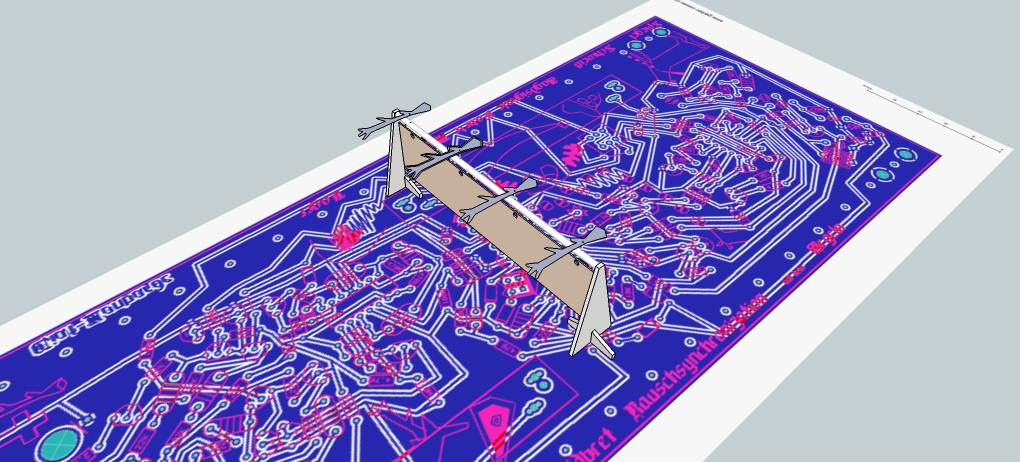
The Deerhorn Project investigates invisible fields which surround architectural objects in the space. It is inspired by the question, "what is a museum of the invisible like?" The deerhorn antenna is a metaphor for other kinds of invisible fields- political, psycho-geographical, subterranean, esoteric, and aesthetic.
The Deerhorn Installation shall utilize any number of Deerhorn circuits, which sonify movement in space. These circuits consist of two radio oscillators, a Phase Locked Loop circuit, and a two channel audio synthesizer. Each circuit generates two tones representing visitors' complementary approach to and withdrawal from the antenna. These antennae shall be crafted from easily resourced material such as aluminum cans. The body of each circuit shall be encased in fabric, carved wood, or other site-specific materials, or left suspended in the air. The circuits are low-power, operable from Solar Panels, and able to cross-modulate to create more "animalistic" sounds.
During a Deerhorn workshop, participants will assemble their own Deerhorn circuits, fit them into cases, and help in the final assemblage/installation at a suitable site. Afterwards, participants may keep their handiwork. Some may want to build multiple copies, to yield a "sub-organ" of their own, and this is encouraged.
The naming of this project Deerhorn, implies the idea of "wild". In fact in can create very wild, untamed sounds as an analog synthesizer, and we will further develop "the wild sound" by inter-modulating Deerhorn circuits within the organ. Finally the pure synthetic tones may become somewhat like a giant organic flock of deer within the space, responding to the humans that visit it.
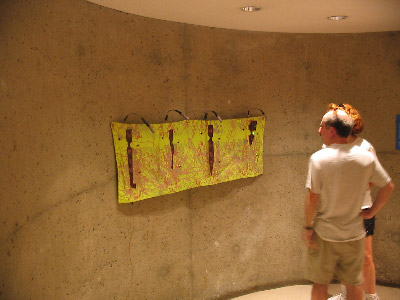
Deerhorn Tapestry Installation, The Marriage of Art, Science & Philosophy, American Visionary Art Museum, Baltimore. October 4, 2008 - September 6, 2009
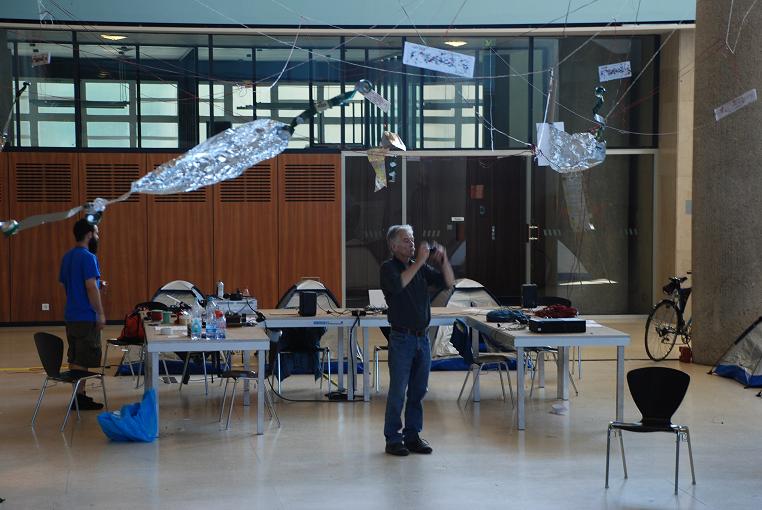
Deerhorn Workshop (installation view) SOMMERKAMPWORKSTATION, Berlin, Germany, August 2009. paper circuits, components, wire, rope, aluminum.
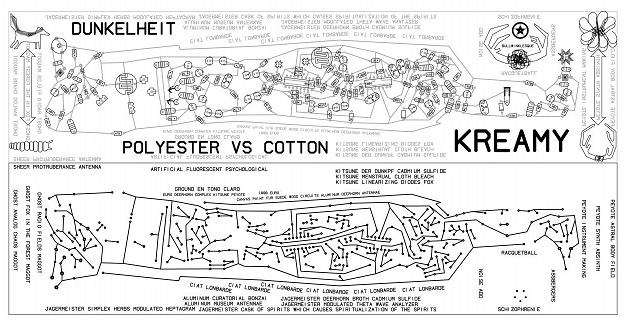
Deerhorn Workshop (paper circuit/schematic) SOMMERKAMPWORKSTATION, Berlin, Germany, August 2009.

Deerhorn Making Workshop, SOMMERKAMPWORKSTATION, Berlin, Germany, August 2009. paper circuits, components, wire, rope, beercans.
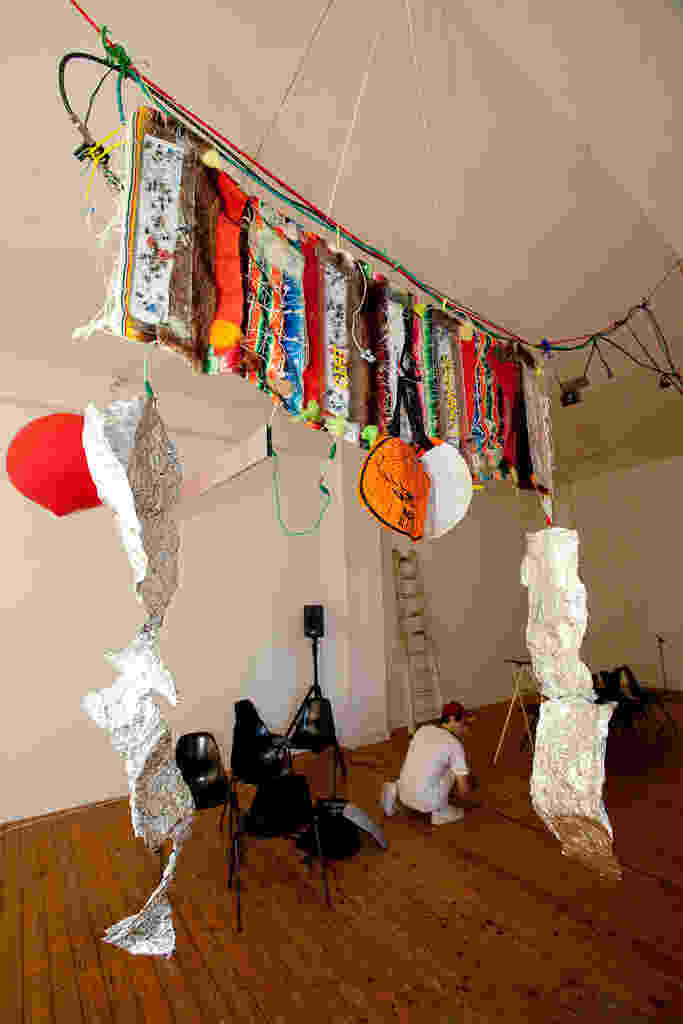
Deerhorn Installation, Moltkerei Werkstat, Cologne, Germany, August 2009. circuits, tapestry, "distressed" aluminum foil, weather balloon.
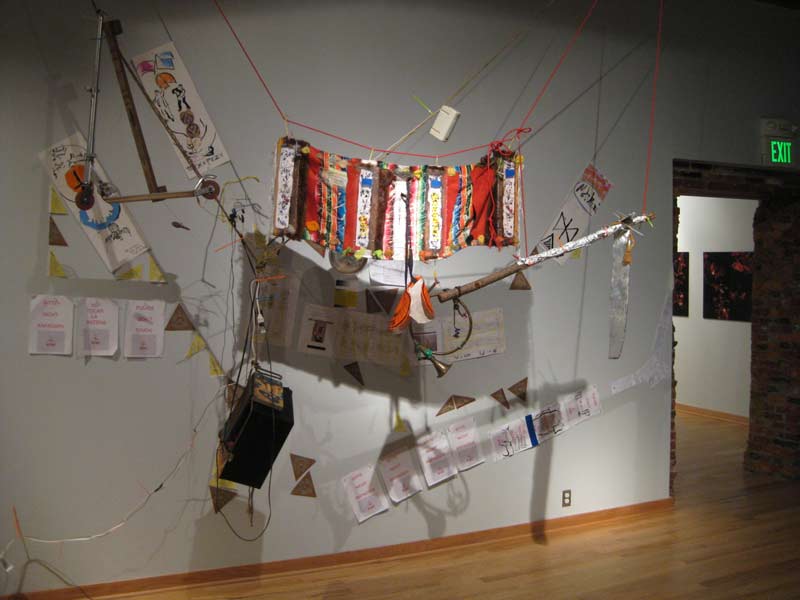
Deerhorn Tapestry Installation, Curators Incubator, 2009. MAP Maryland Art Place.
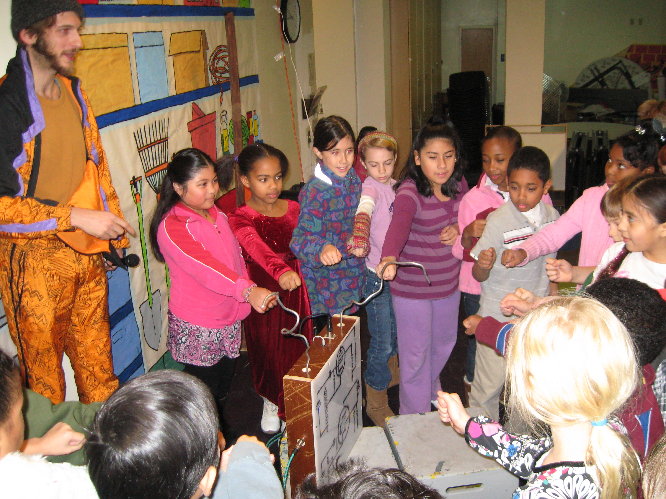
Deerhorn Appearance for Charter School, Washington DC
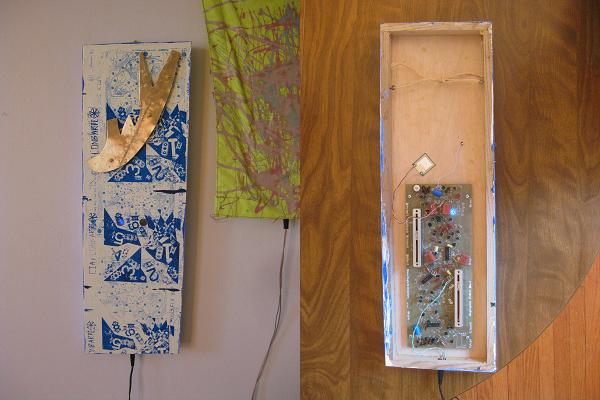
Present for my mother, a single deerhorn piece. wood, circuits, paint, silkscreen, brass, etc.
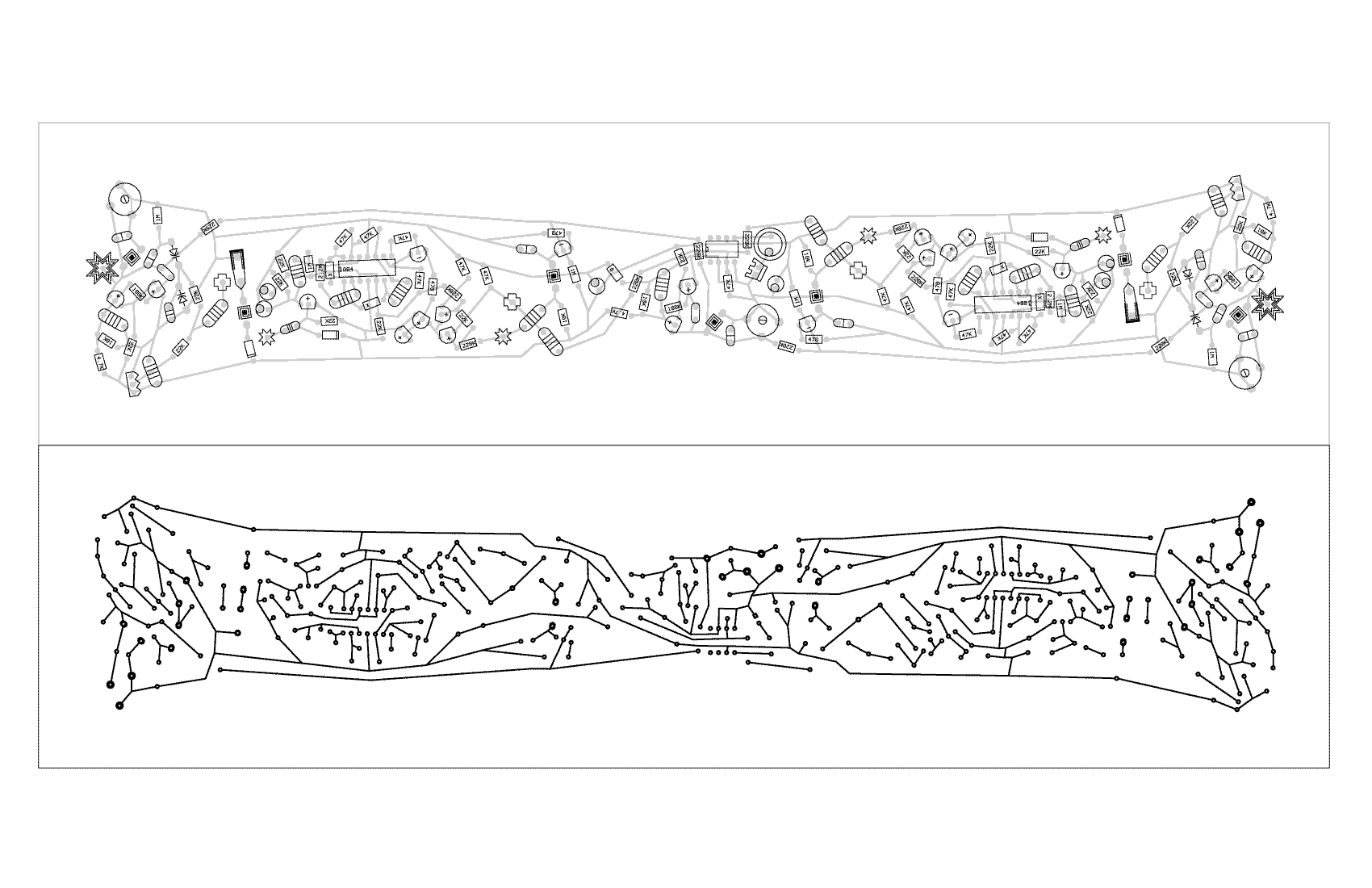
Deerhorn Circuit #2 @ Stairwell Gallery, 2008

Deerhorn Circuit #1 American Visionary Art Museum, Baltimore October 4, 2008 - September 6, 2009
Two deer horns travel the land with boys and generals, for wars and ping pong tournaments.
Four deer horns decorate the palaces of dogs and kings, for ice cream parties and dancey things.

Peter Blasser: Designer of Electronic Tapestries and
Garments. (Click on Image for High Res Shot)